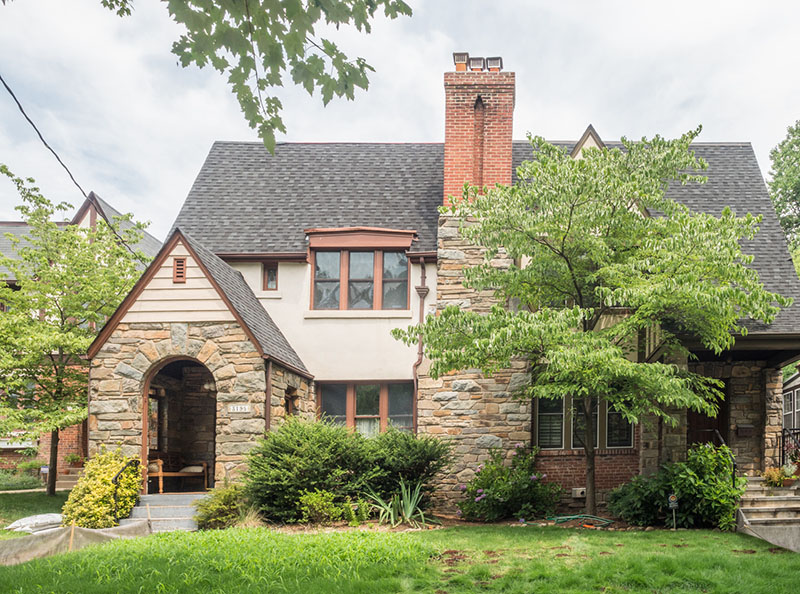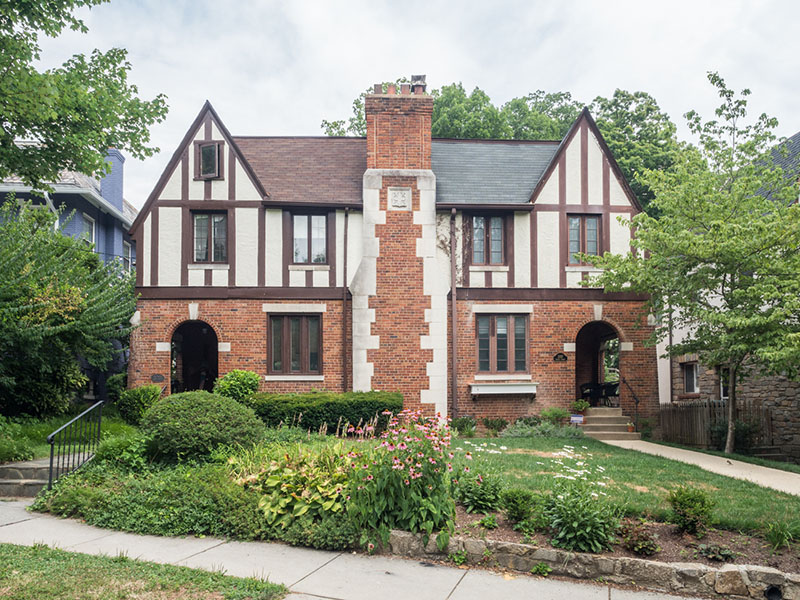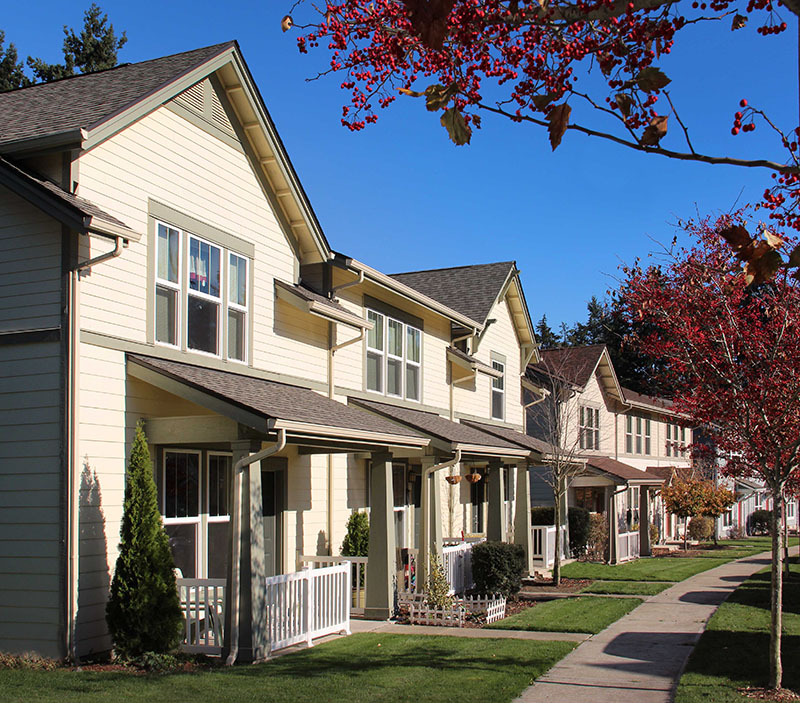By Montgomery Planning staff
This fall, the Montgomery County Council will consider modifying single-family residential zones to help address the county’s severe housing shortage. In June, the Planning Board offered a set of recommendations to the County Council that would allow duplexes, triplexes and other small multi-unit buildings in neighborhoods now restricted to single-family homes. Called Attainable Housing Strategies, the recommendations are an effort to meet the county’s growing demand for housing at different price points and types for all.
The County Council is seeking community feedback at a series of community meetings as part of its review of the recommendations.
Montgomery Planning developed Attainable Housing Strategies. Here are answers to some of the questions we’ve heard most since we started working on this in early 2021.
1. I love my single-family neighborhood. Why would you want to change its character?
If by “character” you mean what your neighborhood looks and feels like, this proposal wouldn’t change it much.
From the outside, new structures with multiple units would look like many of the large, multi-million-dollar houses already replacing the older, smaller homes being torn down. The only noticeable difference might be two front doors instead of one.
We have recommended that zoning standards–such as those for height, setbacks, and lot coverage–remain the same as new single-family houses. Developers also would have to follow guidelines for door placement, parking and other building and lot features. This would help make multi-unit structures blend with the surrounding neighborhood.
Keep in mind, we expect multi-unit housing would be built relatively slowly and piecemeal. Because most homes up for sale don’t make financial sense to tear down, Montgomery County typically sees only about 200 demolitions each year. So, these new multi-unit structures would be gradually sprinkled in, just as new luxury rebuilds are now.

Multi-unit housing would be designed to blend in with surrounding neighborhoods.
2. So why do you want to do this?
The Attainable Housing Strategies initiative was launched at the direction of the Montgomery County Council in 2021. We have a severe housing shortage that has contributed to the average price of a detached home in Montgomery County skyrocketing to more than $1,000,000–far more than most people can afford.
The single-family houses that make up almost half of the county’s housing stock often are too big or expensive for many buyers and renters. You might have been fortunate enough to afford a suitable house in a neighborhood you love, maybe long before our housing prices ballooned. But you also probably know people who need smaller, less expensive options because they live alone, are downsizing empty nesters, or are young families seeking to buy in the pricey Washington, DC region.
Of course, you could still keep or sell your single-family home as is. But allowing new structures to house more than one family per lot would create more opportunities for more people to live–and stay–in Montgomery County.
Our middle-income population is shrinking because the county’s lack of housing options is driving people to live in other areas of the DC region and beyond. The county is expected to add 200,000 more residents over the next 25 years. But we aren’t building enough housing quickly enough to accommodate them, even as we need that growth to help keep our tax base strong and the county economically competitive.
3. Why am I just hearing about this? Is it a done deal?
We’ve been developing and refining this proposal publicly for more than three years through public meetings and community outreach. And there are more opportunities to learn more and weigh in.
If the County Council supports the recommendations, it would introduce legislation, known as a Zoning Text Amendment (ZTA), to implement the changes. The Planning Board would then hold a public hearing on the ZTA, recommend any changes, and send it back to the Council for its review. The Council would also hold its own public hearing followed by work sessions with the Planning, Housing, and Parks Committee and the full Council. After the work sessions is when the County Council would vote on the ZTA.

From the outside, duplexes and other multi-unit structures look like many of the large custom homes being built throughout Montgomery County.
4. My schools already feel crowded. Wouldn’t adding more homes to my neighborhood add even more kids?
We closely analyze and anticipate how many students are generated by new housing of all types and we expect them to have minimal impact on schools.
This kind of development is expected to occur slowly and piecemeal. This means individual communities — and groups of neighborhood schools — would see relatively few new multi-unit structures built each year.
Second, while some individual schools are overcrowded, the system countywide is not, especially at the elementary- and middle-school levels. The high school level will also have surplus capacity after planned new high schools open in the next few years. Montgomery County Public Schools can adjust enrollment boundaries and pursue other tactics to make the best use of systemwide capacity.
As they do today, developers would be required to help pay for any new schools or expansion projects needed to accommodate additional students from their residential projects. They do this through paying impact taxes required of all such projects, as well as additional fees if any of the affected schools are overcapacity.
5. Your recommendations reduce off-street parking-space requirements, such as driveways, for new multi-unit housing in some parts of the county. Won’t this add more parked cars in our neighborhoods?
Reducing the minimum amount of required off-street parking helps lower housing construction costs and, in turn, home prices and rents.
We are proposing to reduce it the most within a mile of a Metrorail, Purple Line or MARC commuter rail station, as well as within 500 feet of designated “growth corridors,” such as Wisconsin and Georgia avenues. These areas would be deemed Priority Housing Districts where quadplexes also would be allowed (see map on page 21 of the Attainable Housing Strategies Final Report).
We haven’t recommended reducing off-street parking minimums in neighborhoods that prohibit on-street parking or are farther from public transportation or a growth corridor.
We expect new multi-unit structures will attract residents who, like their neighbors in single-family homes, want to live within walking or biking distance of mass transit, shopping, and other amenities. This allows them to drive less and own fewer vehicles, if they own one at all. We also expect more people will seek car-free, or less car-dependent, lifestyles as technology improves, alternatives become more prevalent, and future generations seek a smaller environmental footprint.
This is one of the details the County Council will likely consider more during its review of the Attainable Housing Strategies recommendations.
6. I’ve heard new multi-family homes wouldn’t have to be priced below-market as “affordable” housing. How would this help provide more lower-cost homes?
Our goal here isn’t to provide below-market “affordable” housing for people with low and moderate incomes, though we are working to encourage more of that, too. Unfortunately, the financial subsidies required wouldn’t be feasible on the relatively small scale of building two to four units.
Our goal with “attainable” housing is to put more neighborhoods within reach of buyers and renters at a range of incomes, between the lowest and highest ends of the spectrum.
We realize that high land values and construction costs could make some new multi-unit housing more expensive than the surrounding older and smaller single-family houses. However, these units would still be smaller – and, in turn, less expensive – than the new single-family houses replacing teardowns today.
Our recommended zoning modifications are only one piece of the county’s broad approach to providing more housing for people at all income levels and stages of life.

Multi-unit homes, like these in Tacoma, WA, that look similar to a single house would provide a bigger variety of housing choices at more price points.
7. Wouldn’t this encourage new home construction and gentrification?
This proposal wouldn’t force anyone to sell their house for redevelopment. It would simply provide property owners with options to replace an existing single-family home with something other than a large custom house that most people can’t afford.
Also, gentrification refers to an influx of wealthier and typically majority-white residents who renovate or rebuild homes in historically lower-income, disinvested, and majority-black neighborhoods. This increases property taxes, drives out lower-income residents, and vastly changes a neighborhood’s racial makeup.
Our calculations show it would only make financial sense for developers to replace older homes with multi-unit structures in the same neighborhoods where they’re already replacing them with large, expensive custom homes. These areas, mostly inside the Capital Beltway, are neither lower income nor historically disinvested. In fact, they are predominantly white and some of our wealthiest neighborhoods. In these neighborhoods, the status quo is driving up the price of housing, making them increasingly exclusive.
As long as builders may only replace single-family homes with new (and typically much larger and more expensive) single-family homes, that will keep happening. However, if we allow more diverse housing types, these areas could eventually become more inclusive.
To learn more about our proposals, please visit our Attainable Housing Strategies website. We also have a webpage dedicated to responses to additional community questions we’ve received.
Lucio Casiraghi
The only ones benefiting from this bill, are money hungry politicians & developers ! You are not fooling anyone with your proposal. In Italy the same happened and I can assure you the neighborhood changes…for the worse !
Paula M Amann
These new housing options make total sense to me. I so miss the beautiful (and more affordable) dwelling units in vintage two-, four- and six-flats back in my home town of Chicago and its older suburbs.
Webster
I agree with Lucio, follow the money ?
Jim Crilley
This sounds similar to the misguided politically generated socially engineered rationale that got us the Purple Line.